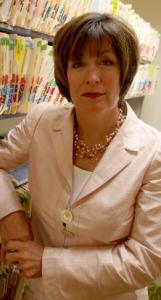skin donation
I was looking at some of the other forums and ran across an ad about skin donation. That there are people waiting to have skin grafts. I emailed the oklahoma chapter and asked about skin donation after weight lose surgery. I will let everyone know when I receive a reply. Having weight lose surgery isn't only helping us, it could also help others in need.
Wow, it will be interesting to hear about!
Tonja
Obesity Help Support Group > http://www.obesityhelp.com/group/tonjasm_group/
I had a tummy tuck and lipo of the side flanks performed by Nathan Miller with Cosmetic Surgery Affiliates in Oklahoma City on June 23rd, 2009.
I had a tummy tuck and lipo of the side flanks performed by Nathan Miller with Cosmetic Surgery Affiliates in Oklahoma City on June 23rd, 2009.
I was told that burn centers would do PS for the skin but after researching for over a month all I got out of sending out 52 emails was this. Most skin grafts are taken from cadeavors. One hospital in germany will do the PS but you have to pay for the hospital room and for a place to stay for 2 weeks after having the surgery. Would love to know what center you are emailing.
Here is the web site http://www.mtfeinformation.org..
Here is an article from the Boston Globe about "living" skin donations.
By Kay Lazar, Globe Staff | July 26, 2007
Like an empty bag of skin. That's how Nina Esile describes the flab that protruded from her stomach to her pelvic area after four pregnancies -- including twins 13 years ago -- left her abdominal muscles severely damaged. The more Esile dieted and exercised -- she dropped 50 pounds over the past two years -- the larger her "bag of skin" became. It got to the point that the Newburyport software writer, a 44-year-old single mother of five, couldn't bear to look at herself in the mirror.
Then Dr. Beverly Shafer, a Beverly surgeon who was poised to repair Esile's abdomen and perform a tummy tuck in May, asked if she'd be willing to donate the large slab of skin about to be removed.
It never entered Esile's mind that the very flab that had caused her so much misery could be transformed into something that could help others. She eagerly signed on. Esile's "living" skin donation process was a first for Shafer, who has been a plastic surgeon for 17 years, and for Massachusetts, according to the Musculoskeletal Transplant Foundation, a New Jersey-based nonprofit organization that describes itself as the nation's largest tissue bank. Shafer is one of roughly 69 surgeons nationwide, and the only one in the state, now collaborating with the foundation on its nascent living skin program.
"I didn't want this skin," said Esile, a vivacious, now 150-pound pioneer. "Its like an old dress you hate and someone says, 'Oh, that's cool.' "
As the number of doctors nationwide seeking skin grafts for complex surgeries continues to grow, so, too, does their need for the precious tissue. The need for large grafts now exceeds the supply of skin available from deceased donors, said the transplant foundation. The shortage sent researchers on a yearlong mission to design a process for turning skin from living donors into usable grafts.
"The challenge with this skin is that even though patients have lost a lot of weight, the skin still had a lot of fat attached to it," said Martha Anderson, executive vice president of donor services at the foundation.
So scientists devised a method to remove all the fat when they removed the top layer of donated skin. They also get rid of the cells, leaving what is called a collagen matrix. Removing cells keeps a recipient's body from reacting to the graft as if it were foreign matter, which is a primary concern in organ transplants. The harvested skin is then implanted in patients whose bodies use this as a scaffolding to start rebuilding skin on their own, Anderson said.
"Recipients do not have to take antirejection drugs for living skin or deceased skin, because we have taken the cells out," Anderson said. "We don't have to do blood-type matching, either -- none of the matching you have to do with organs."
Page 2 of 2 --
After the top layer is removed, the underlying skin, minus cells and fat, is cut and shaped into sections suitable for grafts, then packaged, frozen, and stored for distribution through the foundation.
Article Tools
 © Copyright 2007 Globe Newspaper Company.
© Copyright 2007 Globe Newspaper Company.
 Previous 1 2
Previous 1 2 
Finding hope in donations of 'excess' skin
Beverly surgeon takes lead in breakthrough for grafts
 |
Dr. Beverly Shafer at her office in Beverly. (Robert Spencer for the boston globe) |
 Printer friendly
Printer friendly  Single page
Single page  E-mail to a friend
E-mail to a friend  Health & Fitness RSS feed
Health & Fitness RSS feed  Available RSS feeds
Available RSS feeds  Most e-mailed
Most e-mailed  Reprints & Licensing
Reprints & Licensing  Share on Digg
Share on Digg  Share on Facebook
Share on Facebook  Save this article
Save this article - powered by Del.icio.us
- Globe Health / Science stories |
- Health & Fitness section |
- Science section |
- Globe front page |
- Boston.com
- Sign up for:
- Globe Headlines e-mail |
- Breaking News Alerts

